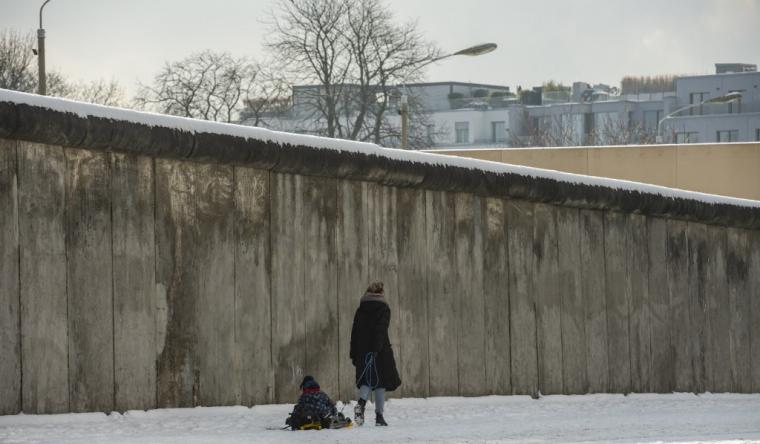
“Divided Past/United Future: Berlin 1945 – Present" at the German American Heritage Center -- November 21.
Sunday, November 21, 2 p.m.
German American Heritage Center, 712 West Second Street, Davenport IA
The tumultuous history and ever-changing nature of the Berlin Wall will be explored in a simultaneously live and virtual November 21 program hosted by the German American Heritage Center, with the Davenport venue hosting Executive Director Kelly Lao as she guides participants through Divided Past/United Future: Berlin 1945 – Present.
The Berlin Wall was a guarded concrete barrier that physically and ideologically divided Berlin from 1961 to 1989, with the structure cutting off West Berlin from surrounding East Germany, including East Berlin. The barrier included guard towers placed along large concrete walls accompanied by a wide area (later known as the "death strip") that contained anti-vehicle trenches, beds of nails, and other defenses, and the Eastern Bloc portrayed the Wall as protecting its population from fascist elements conspiring to prevent the "will of the people" from building a socialist state in East Germany. German Democratic Republic (GDR) authorities officially referred to the Berlin Wall as the Anti-Fascist Protection Rampart, while the West Berlin city government sometimes referred to it as the "Wall of Shame," a term coined by mayor Willy Brandt in reference to the Wall's restriction on freedom of movement. Along with the separate and much longer inner German border that demarcated the border between East and West Germany, it came to symbolize physically the "Iron Curtain" that separated Western Europe and the Eastern Bloc during the Cold War.
Before the Wall's erection, 3.5 million East Germans circumvented Eastern Bloc emigration restrictions and defected from the GDR, many by crossing over the border from East Berlin into West Berlin, and from there they could then travel to West Germany and to other Western European countries. Between 1961 and 1989, however, the Wall prevented almost all such emigration. During this period, more than 100,000 people attempted to escape and over 5,000 people succeeded, though the estimated death toll ranged from 136 to more than 200 in and around Berlin.
In 1989, a series of revolutions in nearby Eastern Bloc countries caused a chain reaction that set in motion a peaceful development during which the Iron Curtain largely broke, the rulers in the East came under pressure, the Berlin Wall fell, and finally the Eastern Bloc fell apart. After several weeks of civil unrest, the East German government announced in November of 1989 that all GDR citizens could visit West Germany and West Berlin. Crowds of East Germans crossed and climbed onto the Wall, joined by West Germans on the other side in a celebratory atmosphere, and over the next few weeks, euphoric people and souvenir hunters chipped away parts of the Wall. The Brandenburg Gate, a few meters from the Berlin Wall, was opened on December 22, 1989, and the demolition of the Wall officially began on June 13 the following year. Completed in 1994, the "fall of the Berlin Wall" paved the way for German reunification, which formally took place that October.
Divided Past/United Future: Berlin 1945 – Present will be presented in the German American Heritage Center's virtual hybrid program at 2 p.m. on November 21, registration for the event is free for members and $5 for non-members, and more information is available by calling (563)322-8844 and visiting GAHC.org.










